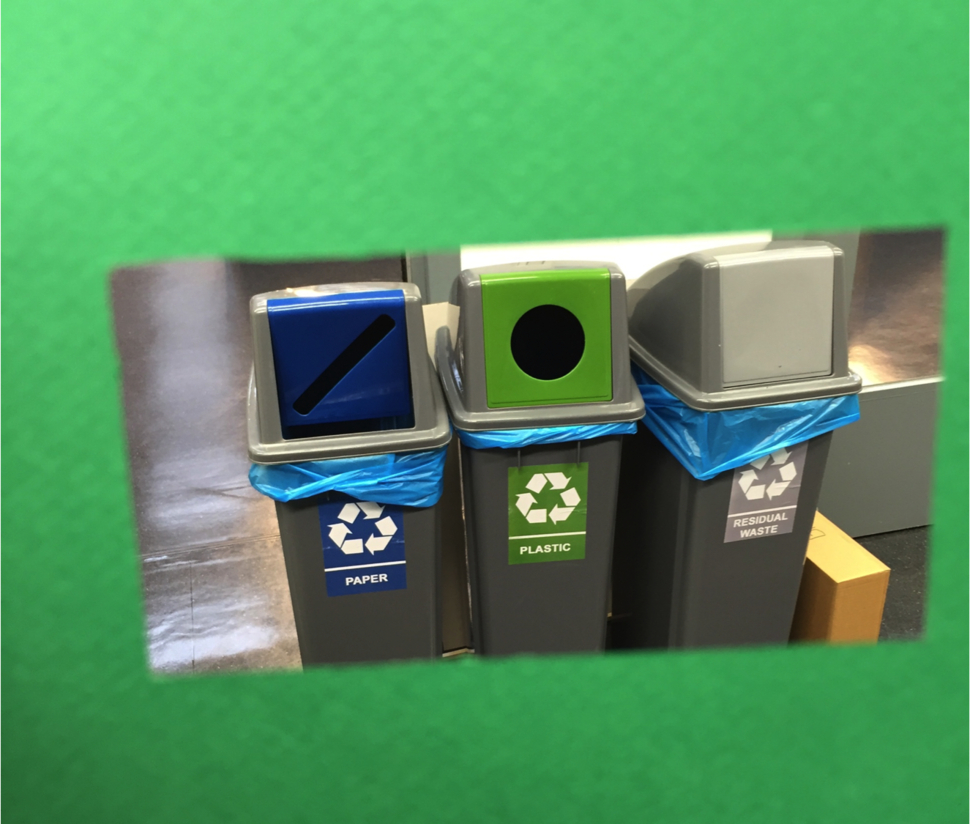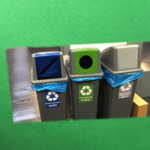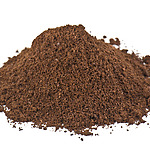During the talk of Gert-Jan de Werk whom with D-Exto is informing people about sustainability on festivals, I got inspired by his statement of think big, start small and then get bigger again. Besides this I was also inspired by the importance of making things concrete by using visuals and tangible products. I realized that this relates very much to a project I am currently working on as a student assistant for the Green Office of TUD. I would like to share some of this project with you by this column.
My student assistant project is about “sustainable waste handling at TUD”. One of the activities is looking at the general picture (waste separation, waste collection, stakeholders, etc.). During the workshop on the 16th of November we had the assignment to make pictures at the campus of what we found (un)sustainable. I saw a lot of pictures of waste bins, either the ones in which waste can be separated and the ones in which the waste cannot be separated. During some pitches it was mentioned that TUD does not do anything on this waste separation, but the existence of my student assistant project proves the opposite. TUD is aware of this problem (with TUD I mean at the operational level), however it is more complicated than just simply replacing all ‘normal’ bins by the bins with separate waste streams. There is a big challenge in the logistics and the costs. Besides this communication is an important factor. For example the method of waste collection should be the same within the TUD in order to be efficient, at this moment the separated waste collection differs very much between for example the Aula, Sport & Culture and Industrial Design faculty.
Another activity within the student assistant project is the development of a product that can be produced with waste of TUD and also can be distributed within TUD; this is in cooperation with VerdraaidGoed and Coffee Based. The waste stream we are looking at is coffee ground, since this is a huge waste stream (approx. 100 kg per day) that currently ends up in the residual waste. By combining the coffee ground with a biobased plastic a new material is developed which will be used in a new product.
What I observed during this project is that when there is a concrete and tangible example of a product, it is way easier to communicate and convince people. When the right people are enthusiastic and convinced, then actually something can be done, like starting the separate collection of the coffee ground. One could argue that coffee ground can also be separately collected and disposed at the green waste, since coffee ground is still valuable in the green waste and that the energy needed for the production of the new product could be saved. However, without this new product, it would have been much harder to convince people to separate the coffee ground in the first place. Here the point of Gert-Jan de Werk comes back: the importance of visuals and tangible products. Besides this I think by focusing on one waste streams (the coffee ground) and thus by starting small, ultimately we can look at the bigger picture again of sustainable waste handling at TUD in general.
To conclude I would like to mention that if you have any suggestions/ideas for sustainable waste handling at TUD or if you have experience with the production of materials with coffee ground, please don’t hesitate to contact me!


